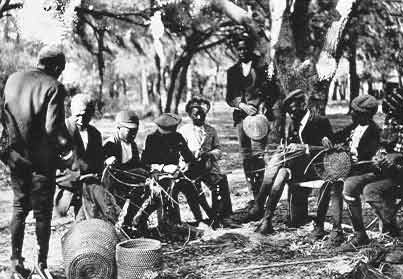Image Gallery: The Penn Center Curriculum
The curriculum of Penn was specially crafted to fit the needs of the Sea Islanders. The school offered
instruction in trades that would be practical for finding work on the islands or in nearby Charleston. This type
of training gave the black community more career choices, and blacks no longer had to feel strapped to the uncertain
life of work in agriculture.The curriculum at Penn was extremely diverse, offering many courses in a variety of
vocations. In 1915, there were 25 teachers (23 black and 3 white). Five of the professors taught in the Boys' industries
department, Three of them worked in the Girls' industries, one in agricultural training, one community worker,
and 5 executive workers. The curriculum was separated along gender lines. Of course, both the boys and girls received
the same instruction in elementary school but as they moved into job training, the curriculum was designed according
to gender roles.
The Women
Due to the inequalities in the salaries of black men in the work force, black families have never been able to
rely on one salary to support their families. Therefore it has always been crucial for black women to be active
members of the labor market. Black women, however were type cast for specific jobs in the job market. They mostly
worked as domestic workers, laundresses, and in factories. The Penn center trained women so that they could be
better equipped to work in these areas.
|
Women at Penn began in the first grade learning the Domestic Sciences
|
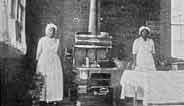
|
|
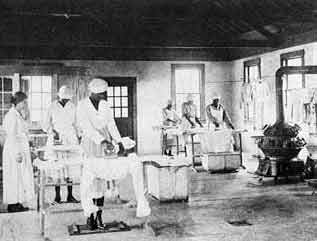
|
Women in Laundries |
|
|
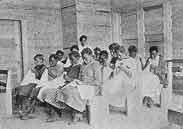
|
mending and sewing
|
|
 |
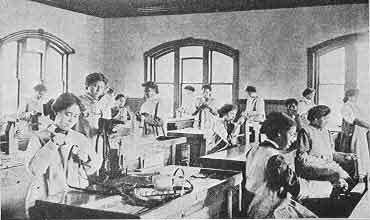
There were a small population of women who learned industrial trades at Penn.
The Men
Black men were also limited to industrial and domestic jobs in the labor market. They had more choice however
than black women in that they could be hired for jobs that would require manual labor and demand a slightly higher
salary. Penn Center trained men in the fields of carpentry, blacksmithing, masonry, wheelwriting, backetmaking,
cobbling, and mechanics.
 |
Manual Training
|
 |
|
wheelwriting
|
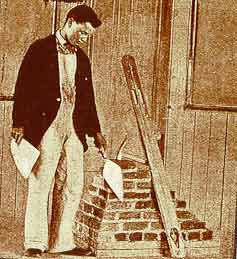 |
masonry |
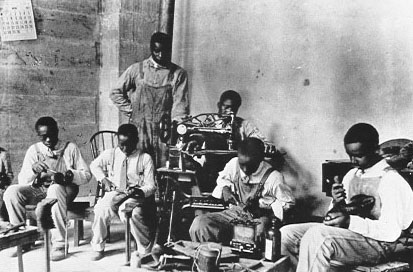 |
|
cobblers in training
|






